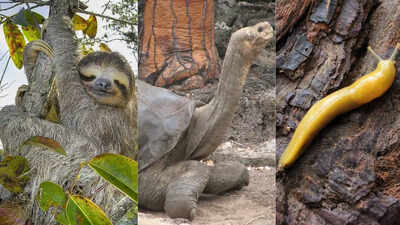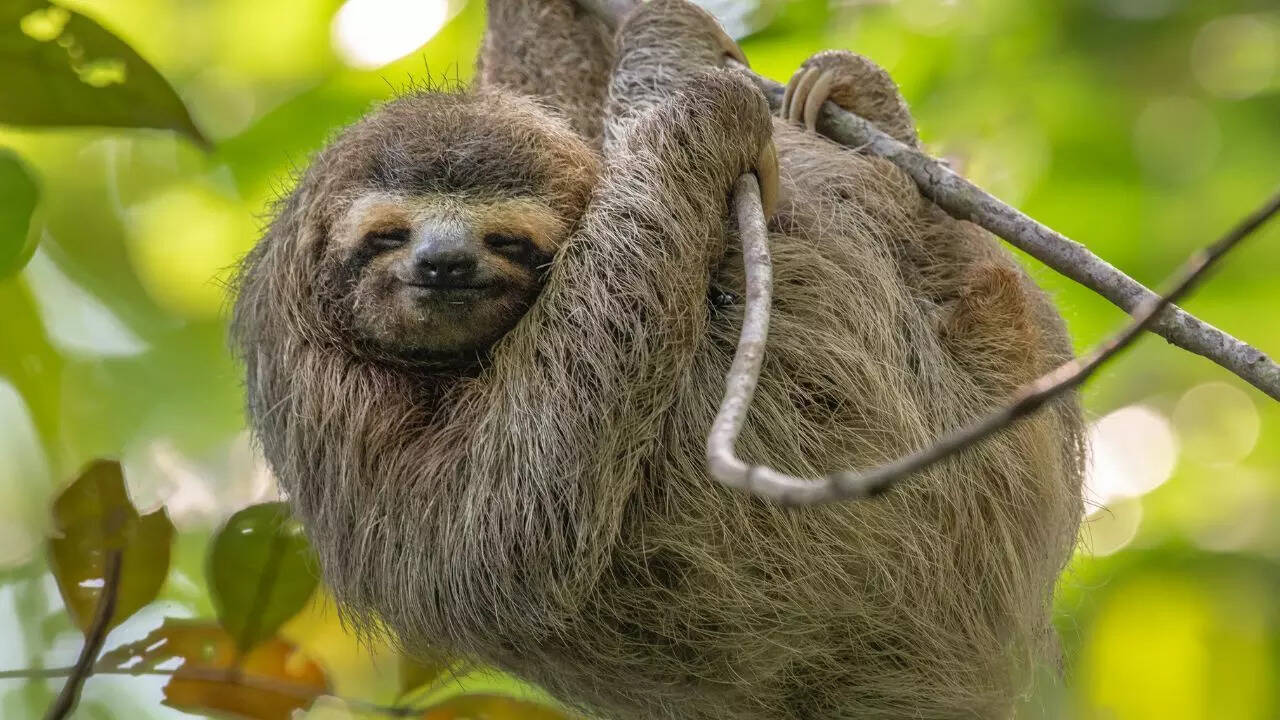ARTICLE AD BOX

When it comes to slow motion, some creatures have truly perfected the art of moving at a crawl. Among the top contenders are the three-toed sloth, the Galápagos tortoise, and the banana slug, each famous for their incredibly slow pace.
But which of these animals really deserves the title of the slowest in the world? The answer might surprise you. To understand why these creatures move so slowly, we need to look at their biology, habitats, and survival strategies that prioritise energy conservation over speed.
Nature’s slowest movers: Sloth, tortoise, and slug
The Three-Toed Sloth

Native to Central and South American rainforests, sloths are arboreal mammals that spend most of their lives hanging upside down from tree branches.
Known for their calm demeanour and ultra-slow metabolism, sloths rely on leafy diets, which provide minimal energy, hence their deliberate pace.The Galápagos Tortoise

One of the largest tortoises on Earth, the Galápagos tortoise is an iconic reptile inhabiting the Galápagos Islands. These gentle giants can live over 100 years, conserving energy through slow, steady movements, a lifestyle adapted for survival in harsh island conditions.
The Banana Slug

Often found on the damp floors of North American forests, banana slugs are terrestrial molluscs with soft bodies and no skeleton. Their gliding movement is powered by mucus secretion, allowing them to stay moist and protected, even though it makes them incredibly slow.
Speed comparison: Sloth, Tortoise, and Slug
Three-Toed SlothSloths are famously sluggish because of their extremely low metabolic rate. This energy-saving adaptation helps them survive on nutrient-poor leaves, while their slow movements make them less visible to predators.Galápagos TortoiseDespite being slightly quicker than sloths, these reptiles are still among the slowest movers in the animal kingdom. Their strategy focuses on energy conservation rather than speed, ensuring survival in environments with scarce resources.Banana SlugThe banana slug is the undisputed champion of slowness. Moving only a few inches per minute, it glides on a layer of mucus to protect its soft body. This method, while effective for moisture retention, is extremely energy-efficient but incredibly slow.
| Animal | Speed |
| Banana Slug | 0.006 mph (0.01 km/h) |
| Three-Toed Sloth | 0.15 mph (0.24 km/h) |
| Galápagos Tortoise | 0.16 mph (0.26 km/h) |
- Sloth: Famously sluggish because of their extremely low metabolic rate.
- Tortoise: Slightly quicker than sloths but still one of the slowest animals.
- Banana Slug: The ultimate champion of slowness, moving only a few inches per minute.
Why being slow helps them survive
Energy conservation
- Slugs use mucus-based movement requiring minimal energy.
- Sloths function on an energy-poor leafy diet, so slowness is essential.
- Tortoises thrive in resource-scarce environments by reducing energy expenditure.
Camouflage and safety
- Sloths blend into the canopy and avoid predators by staying motionless.
- Slugs remain hidden in moist areas, reducing visibility.
- Tortoises rely on thick shells instead of speed for protection.
Longevity and slow lifestyleMany slow animals, like tortoises, have extremely long lifespans. Their pace aligns with a "slow life strategy," prioritising survival over speed.
Diet of these slow movers
Three-Toed Sloth: Sloths primarily eat leaves, shoots, and fruit, making their diet extremely low in calories and nutrients. This energy-poor intake is one of the main reasons behind their slow metabolism and sluggish pace.Galápagos Tortoise: These tortoises are herbivorous grazers, feeding on grasses, leaves, cacti, and fruits.
Their fibrous, low-calorie diet supports a slow and steady lifestyle, ideal for energy conservation on resource-scarce islands.Banana Slug: Banana slugs are detritivores, meaning they feed on decomposing plant matter, fungi, and occasionally animal waste. This diet is nutrient-light but helps recycle organic material in forest ecosystems, aligning with their slow, energy-efficient movement.
While sloths and tortoises are incredibly slow, the banana slug takes the crown as the slowest animal in the world, moving at just 0.006 mph. Its mucus-driven movement and soft body make speed impossible, but this adaptation ensures hydration and energy efficiency in its moist forest habitat.Also read | Why are snakes afraid of mongooses; nature’s ultimate predator battle



.png)
.png)
.png)
















 3 hours ago
3
3 hours ago
3








 English (US) ·
English (US) ·